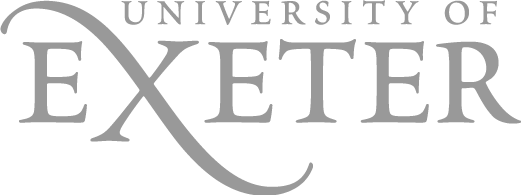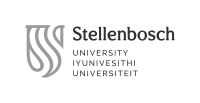S2424 Multimodal Ecolinguistics: Verbal and Visual Framing of Ecological Discourse
Professors
Schedule
Course description
This course focuses on the rapidly growing field of Ecolinguistics, which according to LeVasseur (2015) represents an emergent, leading edge of the Ecological Turn over the past 40 years in academia, adding that insights and methods of ecolinguistics are an underappreciated and underutilized approach to studying human-nature interactions.
Ecolinguistics explores the ways in which language mediates and shapes how people think about and engage with physical spaces, nonhuman animals, and the environment in general (Poole 2022). It is normatively orientated towards preserving relationships which sustain life. More specifically, an ecolinguistic framework investigates the role of language in the climate crisis and ecological collapse while also contributing to the formation of more ecologically sustainable societies. It is ‘critical’ in nature as it challenges prevailing language practices that mediate relationships with the physical world and all of its inhabitants. Accordingly, ecolinguistics aims to reveal and challenge any type of discourse which contributes to continued ecological degradation while promoting language use which stimulates ecological well-being and sustainability (Stibbe 2015; Poole 2022). Discourses consist of clusters of linguistic (and other semiotic) features used to construct relationships with the real world and so it is these models - and clusters of linguistic features constituting them - that are a primary concern of ecolinguistics (Alexander & Stibbe 2014)
Next to a theoretical overview, in which all major aspects of ecolinguistics will be introduced, the course mainly evolves around an empirical component, in which three major intertwined aspects will be addressed: the analysis of various formats and genres, specific verbal phenomena as well as multimodal features of a sustainable future-oriented ecological discourse.
The first focus will be on the elaboration of ecological discourse in various communication formats and genres such as policy texts, corporate campaigns, press releases and newspaper editorials. The survey will also include the often neglected perspective of ‘inreach’, a dialogic communicative format (as in readers’ letters, blog postings etc.), in which “researchers and authorities listen to citizens, and acquaint themselves with citizens’ viewpoints, needs, demands and (maybe seemingly irrational) fears” (Fløttum & Schäfer 2022: 52; Davidse, Simon-Vandenbergen & Van Praet 2023).
With regard to the analysis of specific verbal phenomena, second, this course will look into the patterns and recurrent clusters of lexical, grammatical and semantic features within specific discourses on ecology, which have an habitualizing effect on society. Speaking as a functional linguist, Halliday already in 1990 identified four features which construe the environment in ways he marks as unsustainable: (1) unbounded, non-count nouns present items as limitless, (2) the grammar of “good” as the grammar of “big” with grammar of “small” representing “bad,” (3) inanimate objects are prohibited agency, (4) personal pronouns permitted only for animate entities.
• In this course, we will elaborate on these early observations by analyzing, for instance, how the preferential use of particular words and metaphors helps to conceal or highlight certain aspects of reality (Stibbe & Zunino 2008). This can be documented by the way in which the concept climate change came to replace global warming, which sounds more threatening. The ‘career’ of the phrase climate change demonstrates how controversial terms can be integrated by politicians and the media, or practically sidelined.
• We will also look at the way in which non-human and/or abstract phenomena are rendered without any agency as it is the case with nominalizations. For example, a common expression like the extinction of the rainforest leaves unstated who is responsible for the extinction.
• We will also grow awareness for the fact that commonly used mass nouns like soil and water are ‘unbounded’ in their semantic nature and therefore do not reflect the limited supply of such essential resources.
• We will also grow awareness for the anthropocentric and speciesist perspective we (unconsciously) adopt in using familiar concepts like environment, which implicitly suggests that humans are central and more important than nature.
The third and final aspect of the empirical part focuses on the essential but still largely underestimated dimension of the multimodal exploration of climate change discourse, in which both textual and visual features are incorporated (Wozniak, Lück & Wessler 2015; Dancygier 2023). In their recent study of the way in which international media frame future pathways for dealing with climate change, Guenther, Brüggemann & Elkobros (2022) witness a shift from apocalyptic climate futures to a more diverse, multimodal and potentially empowering reporting. Crucially, they observe how framing effects result from both textual and visual elements in discourse.
In light of the major impact of visualization as an empowering mechanism of any sustainable ecological discourse, this course will reach out and seek collaboration with the TBA21 Academy / Ocean Space Venice (Chiesa di San Lorenzo, Castello), which fosters and catalyzes public initiatives (exhibitions, publications) integrating glocal ecological knowledge with artistic practices involving acoustic and visual art (see https://tba21.org/). This transdisciplinary dimension may encourage all course participants to explore and join ground-breaking initiatives to get art involved in a new type of multimodal, future-oriented ecological discourse (see also Eisner 2008; Dunaway 2009; Betz 2020; Hahn & Berkers 2021; Smilan 2017, 2023).
Learning outcomes of the course
This course aims:
- to familiarize students with theoretical insights of Ecolinguistics as an emerging interdisciplinary field;
- to enable students to critically analyze both verbal and non-verbal aspects of (un)familiar discourses about environmental issues such as climate change;
- to make students aware of (un)intended meanings of conventional and familiar words, metaphors, constructions, phrases and visual images commonly used in various types of ecological discourses.
- to challenge students to creatively contribute to alternative, artful ways of representing future-oriented pathways dealing with climate change.
Teaching and evaluation methods
As far as teaching is concerned, this course will mix both theoretical and practical methods, with a clear emphasis on the discussion of illustrations, examples and case studies throughout the semester. During the first weeks, students mainly prepare classes by doing preparatory readings (approx. 25 pages per week). Students (alone or pairwise) will also be asked to prepare exercises and case studies in order to participate in class discussions.
In the second half of the semester, students will be invited to gather data and present a small empirical survey of ways in which, in their own culture, environmental issues are (non-)verbally framed in various formats and media. Every presentation will be completed by a Q&A-session along with a discussion.
Finally, every student hands in an empirical report (between 2500 and 3500 words), in which the major findings of the empirical survey need to be addressed. With regard to the optimization of this assignment, intermediate individual feedback sessions will be organized.
Detailed information, guidelines and useful materials will be available during the semester in the e-learning platform.
Evaluation
- Interaction & involvement (discussion, feedback, …) (20%)
- Preparation of small assignments, tasks & exercises (10%)
- Oral presentations (30%)
- Empirical report (40%)
Bibliography (articles or excerpts from books mentioned; not all must be read!)
Alexander, Richard & Arran Stibbe (2014), From the analysis of ecological discourse to the ecological analysis of discourse, Language Sciences, 41, 104-110.
Bentz, Julia (2020), Learning about climate change in, with & through art, Climate Change, 1595–612.
Dancygier, Barbara (2023), Multimodal media: Framing climate change, Discourse Studies, 1-17.
Davidse, K., A.-M. Simon-Vandenbergen & W. Van Praet (2023): Listening to the voices of citizens in climate communication. Lecture UNamur, 20.04.2023.
Dunaway, Finis (2009), ‘Seeing global warming: Contemporary art and the fate of the planet’, Environmental History, 14:1, 9–31.
Eisner, Elliot (2008), ‘Art and knowledge’, in J.G. Knowles and A.L. Cole (eds), Handbook of the Arts in Qualitative Research, Los Angeles, CA: Sage Publications, 3–12.
Fløttum, K., Schäfer, M. (2022), The Language of Debate and Communication about Climate Change in Flanders. Report of the Thinkers’ Cycle of the Royal Flemish Academy of Belgium for Science and the Arts, Brussels: KVAB.
Guenther, Lars, Michael Brüggemann & Shorouk Elkobros (2022), From Global Doom to Sustainable Solutions: International News Magazines’ Multimodal Framing of our Future with Climate Change, Journalism Studies, 23:1, 131-148,
Hahn, Ulrike and Berkers, Pauwke (2021), ‘Visualizing climate change: An exploratory study of the effectiveness of artistic information visualizations’, World Art, 11:1, 95–119.
Halliday, M.A.K., (1990), New ways of meaning. A challenge to applied linguistics. Journal of Applied Linguistics, 6, 7–36.
LeVasseur, Todd, (2015), Defining “Ecolinguistics”?: challenging emic issues in an evolving environmental discipline, Journal of Environmental Studies Science, 5 (1), 21-28.
Poole, Robert, 2022, ‘An Introduction to Ecolinguistics and Corpus-Assisted Discourse Study.’ Corpus-Assisted Ecolinguistics. London: Bloomsbury Academic, 1–26.
Smilan, Cathy (2017), ‘The art of climate change: Art education for global citizenry’, in R. Shin (ed.), Convergence of Contemporary Art, Visual Culture, and Global Civic Engagement, Hersey, PA: IGI Global Publications, 100–17.
Smilan, Cathy (2023), ‘Visualizing climate change: Here we come to save the day!’, International Journal of Education Through Art, Special Issue: ‘Art, Sustainability and Partnerships’, 93–111.
Stibbe, Arran (2015), Ecolinguistics: Language, Ecology and the Stories We Live by, Routledge, London.
Stibbe, A. & F. Zunino (2008), Boyd’s forest dragon or the survival of humanity: discourse and the social construction of biodiversity. In: Döring, M., et al. (Eds.), Language, Signs and Nature: Ecolinguistic Dimensions of Environmental Discourse. Stauffenburg Verlag, Tübingen, 165–181.
Wozniak, Antal, Julia Lück & Hartmut Wessler (2015), Frames, Stories, and Images: The Advantages of a Multimodal Approach in Comparative Media Content Research on Climate Change, Environmental Communication, 9:4, 469-490.
Last update: January 22, 2024


















